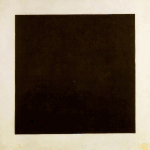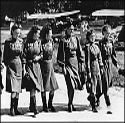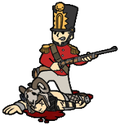|
Can someone tell me about late medieval European combat? I'm mainly interested in the battle of Grunwald but it is difficult to find reliable accounts of it, not that I would be sure where to start. Was it really all about the heavy cavalry charge? What was the role of the crossbowmen and other infantry? Would light cavalry have been employed in a charge as well? In lots of accounts I've read about knights charging over their own infantry, did this actually happen and if so was it a deliberate tactic? Did commanders have some kind of control on the battlefield or was it just a matter of pointing the knights in the right direction? Was the actual melee very deadly in itself or was it more of a pushing match to see who would lose cohesion first? Were bombards an effective weapon in 1410 or more of a terror thing?
|
|
|
|

|
| # ? Jun 10, 2024 12:36 |
|
jonnypeh posted:The Guns of August is written very well. Yeah, Barbara Tuchman was a bit...prejudiced towards the Germans, though Guns of August is still a good account I think. A Distant Mirror (worth a read) mostly focuses on 14th century France and Britain, but she still sneaks in one last Imperial German act of barbarity at the very end of the book. One that they frankly deserved some derision for--in 1917 they dynamited the Chateau de Coucy, an awesome medieval castle, for no discernible reason besides "gently caress you, France".
|
|
|
|
I don't suppose somebody could do a detailed write up about the general history of the US Army from just after the War Of American Independence up to just before the US Civil War? Apologies if that sounds too vague.
|
|
|
|
|
SeanBeansShako posted:I don't suppose somebody could do a detailed write up about the general history of the US Army from just after the War Of American Independence up to just before the US Civil War? Really you just want to know about the US-Mexican War.
|
|
|
|
I saw a decent documentary about that almost a year ago, but if somebody wants to go into detail about that war they can go ahead. I'll glad read and absorb it.
|
|
|
|
|
Hitler was caught admitting to the Finnish prime minister(?) that the Germans were completely unprepared to invade the Soviet Union but that the Red Army was in such a bad shape that invading now was the only choice, because Germany would get weaker and the S.U. stronger as time passed. Any good e-books or articles about Alexander's journey\army composition and Roman equipment\training before and after the Marian reforms? Wikipedia isn't bad but i'd like to study something better than it.
|
|
|
|
Morholt posted:Can someone tell me about late medieval European combat? I'm mainly interested in the battle of Grunwald but it is difficult to find reliable accounts of it, not that I would be sure where to start. Though I really cannot say anything more than you'd find at wikipedia, as I half-remember it from the school, I'd like to point you towards two things. First is wikipedia. No, not in the sense of "go loving google it moron", but the English wikipedia article about it is actually surprisingly good and detailed. Second is that, somewhat surprisinly there's a translated fragment of Jan Długosz's chronicle. It was written about 50 years after the battle, is pretty much the most trustworthy of main polish medieval chronicles and in that particular case is one of the major written sources about the battle. Best of all, the coolest part of the battle (IMO), that is Jagiełło's stalling to keep the heavily-armored knights boiling in scorching sun and the "two bare swords" trash-talking bit is totally legit.
|
|
|
|
Hey guys, does anyone have any information they like about "toss bombing" of nuclear weapons during the Cold War? The idea was that you flew at the target on the deck, gained altitude and released the bomb forward; then did a cartwheel and headed back the way you came as the bomb detonated. A wide variety of American aircraft were designed or fitted with equipment for this procedure early in the period but I don't know how/how much it was trained for, or how well it was projected to work in combat. I'm interested because it appears to have been a widely accepted method but also sounds rather frightening and dangerous.
|
|
|
|
StandardVC10 posted:Hey guys, does anyone have any information they like about "toss bombing" of nuclear weapons during the Cold War? The idea was that you flew at the target on the deck, gained altitude and released the bomb forward; then did a cartwheel and headed back the way you came as the bomb detonated. A wide variety of American aircraft were designed or fitted with equipment for this procedure early in the period but I don't know how/how much it was trained for, or how well it was projected to work in combat. I'm interested because it appears to have been a widely accepted method but also sounds rather frightening and dangerous. What I know of it, it was more used in conventional bombing so you could release a bomb out of range of AAA fire. The Israeli's used it a lot, but it had a downside of not being as accurate.
|
|
|
|
StandardVC10 posted:Hey guys, does anyone have any information they like about "toss bombing" of nuclear weapons during the Cold War? The idea was that you flew at the target on the deck, gained altitude and released the bomb forward; then did a cartwheel and headed back the way you came as the bomb detonated. A wide variety of American aircraft were designed or fitted with equipment for this procedure early in the period but I don't know how/how much it was trained for, or how well it was projected to work in combat. I'm interested because it appears to have been a widely accepted method but also sounds rather frightening and dangerous. I'd rather toss a tactical nuke at an enemy command post protected by SAMs and AAA than fly directly over it to drop unguided HE on it... I would imagine that toss bombing is a lot more practical now, due to the prevalence of laser and GPS guided munitions. I can't find any recent information on the topic, though. I've done it myself in DCS: A-10C. The limited performance of the A-10 makes it more of an exhibition of technique than a useful tool, though.
|
|
|
|
So I came into a belated Christmas gift to Barnes and Noble, and I was wondering if anyone knew of any books that focus on the smaller nations of the world wars, Finland, Romania, Greece, Hungary(or Austria-Hungary), Bulgaria, ect. I don't mind whether its about the nation's military history during the war, or life inside the country during the war.
|
|
|
|
MrYenko posted:I've done it myself in DCS: A-10C. The limited performance of the A-10 makes it more of an exhibition of technique than a useful tool, though. Sup sim-tossing buddy. Good old Tornado by DI had flight computer assisted toss bombing in it (and laminated maps, a giant manual, and all kinds of obscure stuff; I still don't know how I ever got around to finishing almost every mission as a non-native speaking child). It still was a pretty hairy maneuver to pull of though. As for the nuclear version: this extensive Air & Space Mag article which I remember reading a couple of months ago is literally the third Google hit. Here's some proof that the Soviet Air Force was still practicing that kind of thing in the early seventies. That entire site is a goldmine btw.
|
|
|
|
There's some good information if you search for LABS as well.
|
|
|
|
Koesj posted:As for the nuclear version: this extensive Air & Space Mag article which I remember reading a couple of months ago is literally the third Google hit. Here's some proof that the Soviet Air Force was still practicing that kind of thing in the early seventies. That entire site is a goldmine btw. Ah, I remember reading this article back when I subscribed to Air and Space, it's pretty much what I was looking for. Oddly I hadn't heard of the practice being used for regular munitions, just nukes.
|
|
|
|
Mans posted:Hitler was caught admitting to the Finnish prime minister(?) that the Germans were completely unprepared to invade the Soviet Union but that the Red Army was in such a bad shape that invading now was the only choice, because Germany would get weaker and the S.U. stronger as time passed. HEY GUNS fucked around with this message at 08:39 on Jan 16, 2013 |
|
|
|
Amused to Death posted:So I came into a belated Christmas gift to Barnes and Noble, and I was wondering if anyone knew of any books that focus on the smaller nations of the world wars, Finland, Romania, Greece, Hungary(or Austria-Hungary), Bulgaria, ect. I don't mind whether its about the nation's military history during the war, or life inside the country during the war.  ) )
HEY GUNS fucked around with this message at 05:26 on Jan 16, 2013 |
|
|
|
StandardVC10 posted:Hey guys, does anyone have any information they like about "toss bombing" of nuclear weapons during the Cold War? The idea was that you flew at the target on the deck, gained altitude and released the bomb forward; then did a cartwheel and headed back the way you came as the bomb detonated. A wide variety of American aircraft were designed or fitted with equipment for this procedure early in the period but I don't know how/how much it was trained for, or how well it was projected to work in combat. I'm interested because it appears to have been a widely accepted method but also sounds rather frightening and dangerous. If I remember correctly, this was because while high-altitude strategic bombers weren't guaranteed to react quickly or get through defenses of nuclear-armed missiles, smaller aircraft weren't very good for delivering nuclear weapons, so the Air Force developed some debatable tactics to try to fit bombs onto fighters and still live through the stunt. There's a bit in Yeager's autobio where he talks about planning to use F-86s to drop nukes in what was generally understood to be suicide missions, either because the plane wouldn't escape the blast or wouldn't have the fuel to return after lugging a relatively heavy bomb into Eastern Europe. The US tried to improve the state of the art in faster bombers, culminating in the A-5 (which became the SR-71) and B-70 (cancelled) and their Soviet interceptor the MiG-25. Then ICBMs arrived and the problem was solved.
|
|
|
|
Lord Tywin posted:How did one become a member of a garrison of a medieval castle? Where they recruited locally or professional men-at-arms? Our understanding of recruitment in the 11th and 12th centuries is quite fuzzy when it comes to the common man. In times of (relative) peace, it is clear that castle guard would be mostly, perhaps even exclusively, a professional or semi-professional job. Thus Galbert, in describing two men defending the castle of Bruges from its citizens, chooses a powerful knight and an archer. However, it is also clear that some of the men trapped in the castle were non-professional, and had simply wound up on the wrong side of a failed coup. For knights, they were a mix of men serving out of feudal obligation to their lord and paid men (stipendarii). jonnypeh posted:Looking for recommended history reading, preferably in the form of kindle e-books, as in something that can be found and bought on amazon.com. Kindle is poo poo for medieval warfare, it seems. Unfortunately, most good books on the subject are quite dry, so if you are ok with that, here are my recommendations: The most basic choice is Philipe Contamine's Art of War in the Middle Ages. It is a flawed work, at times quite seriously, but it is still very valuable as a starter. Medieval Warfare: A History edited by Maurice Keen is an excellent supplement, and fills in some of the gaps. The biggest exception to this is Clifford Rogers' chapter which perpetuates all kinds of stupid bollocks about the spread of the 'infantry revolution' which is an annoyingly persistent, albeit updated, relic of Oman's views on medieval warfare. I really wish it would die. Also, John Gillingham's chapter has a few inaccuracies in it, which is unusual for him but there you go. Matthew Strickland's War and Chivalry, which I mentioned in my big post, is extremely valuable for filling in the cultural side of warfare, and gets down to the nitty gritty of who lives and who dies within the chivalric ethos. It also has a lot of fine examples of the operational side of warfare, but does not really elaborate on them as that is not its purpose. For a bit more depth in my area of particular interest, you cannot beat Anglo-Norman Warfare, edited by Matthew Strickland. In addition to excellent articles by Strickland, R. Allen Brown, and Marjorie Chibnall it also has the 3 main articles that lay out Gillingham's 'Vegetian warfare' model. Morholt posted:Can someone tell me about late medieval European combat? I'm mainly interested in the battle of Grunwald but it is difficult to find reliable accounts of it, not that I would be sure where to start. I'm not the best on late medieval warfare, but I'll tell you what I can manage... in another post. Just for clarity, I'll be talking about the period from roughly 1300 to the end of the Hundred Years War in 1453, and chiefly the countries involved in it. Though some of what I say will be translatable to other parts of Europe or other periods, I'll try to stick to the places I'm strongest.
|
|
|
|
So I've been pouring through Yi Sunshins battle reports from the Imjin War. He lists casualties, and along with the name usually their position as well. What struck me most (apart from the insane number of slaves serving in combat) was that after the Battles of Sacheon, Dangpo and Danghangpo, several "sea-divers" are listed as KIA. I'm 99% certain they weren't carrying waterproofed explosive charges (dunno if these even existed at this time) against enemy ships because that just seems so ridiculous. Can someone with any insight into 16th century Asian naval warfare tell me what the hell sea divers are and what they would be doing during a battle? Repairing damages below the waterline? Without modern diving technology what can they even do except swim around, hold their breath for a minute and get shot by muskets? I pretty much have nothing else to go on except this quote:Reference is made to them in the Annals of King Seonjo, which talks of “Sea Ghosts” with yellow pupils, black skin, goatees, and curly hair like black wool. These frogmen were apparently introduced to King Seonjo by a Ming general as frogmen from Portugal who could attack enemy ships from underwater. 
|
|
|
|
A giant bugs bunny saw to slice open a hole under the waterline
|
|
|
|
THE LUMMOX posted:So I've been pouring through Yi Sunshins battle reports from the Imjin War. He lists casualties, and along with the name usually their position as well. What struck me most (apart from the insane number of slaves serving in combat) was that after the Battles of Sacheon, Dangpo and Danghangpo, several "sea-divers" are listed as KIA. I know nothing about 16th century Asian naval warfare but it seems possible that they were divers who served as crew during combat. If you saw someone listed as KIA during a 19th century European sea battle and his position listed as "Carpenter" you wouldn't assume he was busily building furniture with which to assault the enemy. There are certainly plenty of dark-skinned peoples from the southwest Pacific who have a tradition of diving and it's conceivable they would have been valued for that skill enough to end up in Asian navies. Edit: There's plenty of jobs in a wood-ship navy for a guy who is comfortable working underwater. First thing that comes to my mind is actually the recovery of fouled anchors. Anchors were expensive and rather necessary pieces of equipment and having a guy aboard who could dive way down to deal with anchor-related problems would be pretty useful. Rent-A-Cop fucked around with this message at 08:22 on Jan 16, 2013 |
|
|
|
Is it possible that they could have been used for espionage/sabotage operations?
|
|
|
|
Rodrigo Diaz posted:Just for clarity, I'll be talking about the period from roughly 1300 to the end of the Hundred Years War in 1453, and chiefly the countries involved in it. Though some of what I say will be translatable to other parts of Europe or other periods, I'll try to stick to the places I'm strongest.
|
|
|
|
StandardVC10 posted:Hey guys, does anyone have any information they like about "toss bombing" of nuclear weapons during the Cold War? The idea was that you flew at the target on the deck, gained altitude and released the bomb forward; then did a cartwheel and headed back the way you came as the bomb detonated. A wide variety of American aircraft were designed or fitted with equipment for this procedure early in the period but I don't know how/how much it was trained for, or how well it was projected to work in combat. I'm interested because it appears to have been a widely accepted method but also sounds rather frightening and dangerous. Here's an excellent post with illustrations and discussion and everything on the topic: http://forums.somethingawful.com/showthread.php?threadid=3373768&pagenumber=7#post386369460 The rest of that thread is a goldmine of everything widely accepted but also frightening and dangerous about the Cold War military.
|
|
|
|
I know this is a broad topic but I'd love to hear about reverse engineering of enemy technology for use against them. I know the Panzerschreck for example was technically an improvement on captured US bazookas. But really any theater throughout history will do
|
|
|
|
Alan Smithee posted:I know this is a broad topic but I'd love to hear about reverse engineering of enemy technology for use against them. I know the Panzerschreck for example was technically an improvement on captured US bazookas. But really any theater throughout history will do The Romans stole pretty much everything they liked from their neighbours. In the Age of Sail British technological innovation essentially came from capturing French ships and then copying the design.
|
|
|
|
The US after WWII had a ton of military equipment based on German designs, such as the M60 machine gun being a derivative of the MG42. On the Soviet side, Mikhail Kalashnikov based the AK-47 design on the StG 44. The Germans did more in WWII to help the Cold War arms race than just about any nation on Earth.
|
|
|
|
Base Emitter posted:If I remember correctly, this was because while high-altitude strategic bombers weren't guaranteed to react quickly or get through defenses of nuclear-armed missiles, smaller aircraft weren't very good for delivering nuclear weapons, so the Air Force developed some debatable tactics to try to fit bombs onto fighters and still live through the stunt. IIRC, before the development of the ballistic missile submarine, the US Navy's contribution to the nuclear triad was carrier launched nuclear bombers. I vaguely recall reading something on the internet by a guy who said he'd been trained to execute this mission; something about how they were supposed to lob the bomb in then close one eye against the blast so you could use the remaining eye to navigate back to the carrier, which was probably going to have been sunk by Soviet nuclear missiles by then. I don't know how true that is, but ...
|
|
|
|
Was toss bombing really just a Cold War thing? I think I read somewhere that FW-190s on ground attack missions would also use it or something like it.
|
|
|
|
gradenko_2000 posted:Was toss bombing really just a Cold War thing? I think I read somewhere that FW-190s on ground attack missions would also use it or something like it. In fairness what could their target be where you would lob a 50 or 100kg bomb at it and expect any kind of success? The reason nukes were used is because you don't need any accuracy, and the lobbing motion gets the aircraft as much out of the danger zone as possible.
|
|
|
|
VikingSkull posted:The US after WWII had a ton of military equipment based on German designs, such as the M60 machine gun being a derivative of the MG42. On the Soviet side, Mikhail Kalashnikov based the AK-47 design on the StG 44. The Germans did more in WWII to help the Cold War arms race than just about any nation on Earth. Hugo Schmeisser and Werner Gruner being
|
|
|
|
SeanBeansShako posted:I don't suppose somebody could do a detailed write up about the general history of the US Army from just after the War Of American Independence up to just before the US Civil War? That period really saw the US focusing on the development of its Navy. The whole revolution was basically fought in order to protect American mercantile interests from British interference, and for the first couple decades of the country the Navy regularly shelled and occupied places all over the world, usually to fight piracy but also occasionally to claim prize ships or to enact revenge for people killing a sailor or something. We got pretty good at making small and medium sized ships that could patrol the Gulf of Mexico, Carribbean and Central America and while we didn't really have the huge ships of the line that European powers had, our frigates and such were generally considered to be world class. The Army, in comparison, sort of stagnated. With the Westward expansion into first the Midwest and then later across the Great Plains and to the West Coast there was just way too much territory to effectively patrol and manage, so you see a lot of garrisons popping up along commonly traveled routes and in population centers, but we didn't have a particularly well trained or organized army. Then again, we didn't really have the need for one- the kind of people who were living out on the frontier and provoking fights with the natives tended to be able to handle themselves fairly well in a fight, so you start seeing a tradition of posses and homegrown militias that's still kind of romanticized today. When Texas was established in the 1830s they got a big influx of American adventurer types to round out their army against the Mexicans, and they fared pretty well against Santa Ana's trained army of regulars.
|
|
|
|
How true is the chestnut about Americans using "guerilla tactics" in the American Revolution? I know they obviously didn't invent it, as is taught, so I assume the rest is bullshit. Many history teachers taught that Americans were some kind of geniuses because we "hid behind rocks and trees and stuff" : wasn't this not only standard practice for light infantry, but also kind of crappy because it meant you couldn't focus fire and do real damage? Hence why you only did it with light infantry. If you want to back this up into "Americans used ambushes a bunch because they knew the terrain" it seems probable, but I want the opinion of people smarter than I am.
|
|
|
|
As I understand it, the war was won mainly by reinforcements from the French and British incompetence. Guerilla tactics didn't really carry the day.
|
|
|
|
Xiahou Dun posted:How true is the chestnut about Americans using "guerilla tactics" in the American Revolution? I know they obviously didn't invent it, as is taught, so I assume the rest is bullshit. The concept of 'skirmishing' is not something the American rebels invented. It's pretty old. Also it just isn't true that guerilla tactics were a decisive or even primary method of the revolutionaries. The Continental Army fought over a dozen battles over the course of the war. Cornwallis didn't surrender to a bunch of partisans - he surrendered to a conventional army fighting a conventional war. e: the reason why "hiding behind rocks and trees and stuff" doesn't tend to win you a war is because "rocks and trees and stuff" tends to be worthless land nobody cares about. If you want to win you need to control cities and ports and other important strategic locations and that means that sooner or later you'll have to march out and fight for them. Alchenar fucked around with this message at 20:13 on Jan 16, 2013 |
|
|
|
Guerrilla warfare is something you do because you have to, not because you want to.
|
|
|
|
Alchenar posted:The Continental Army fought over a dozen battles over the course of the war. Cornwallis didn't surrender to a bunch of partisans - he surrendered to a conventional army fighting a conventional war. Not just a conventional army. Considering 1/2 the land forces around Yorktown were French as well as the French navy blocking escape, we're talking about a highly trained conventional army. 
|
|
|
|
Xiahou Dun posted:How true is the chestnut about Americans using "guerilla tactics" in the American Revolution? I know they obviously didn't invent it, as is taught, so I assume the rest is bullshit. "Guerrilla tactics" are probably overrated when speaking of the War of Independence; "guerrilla operations" would be more to the point. Partisan bands were absolutely a thing, and worked in much the way you'd expect from most other examples - they make the occupying power spend a great deal of effort communicating or supplying, and allow isolated supporters or small outposts to be ground away. Alchenar - you don't really need to control cities or ports to win an irregular war.
|
|
|
|
I think people are actually underestimating the effectiveness of American irregulars- outside of the Continental Army under Washington, the only real successes the Americans had in the war were due to militias taking advantage of surprise and intimate knowledge of terrain, like the Green Mountain Boys capturing Fort Ticonderoga. Francis Marion is considered to be the founder of the US Army Rangers, and is really the only American leader to have any degree of success agains the British in the South. The Continental Army only ever had limited success in pitched battle against British regulars, and the whole war basically hinged on the two-pronged strategy of attrition and diplomacy with the French in order to pressure the British sea lanes.
|
|
|
|

|
| # ? Jun 10, 2024 12:36 |
|
Don't discount Greene's Southern Campaign, either, but yeah, dumping all the credit on the French is an incorrect distillation.
|
|
|


































